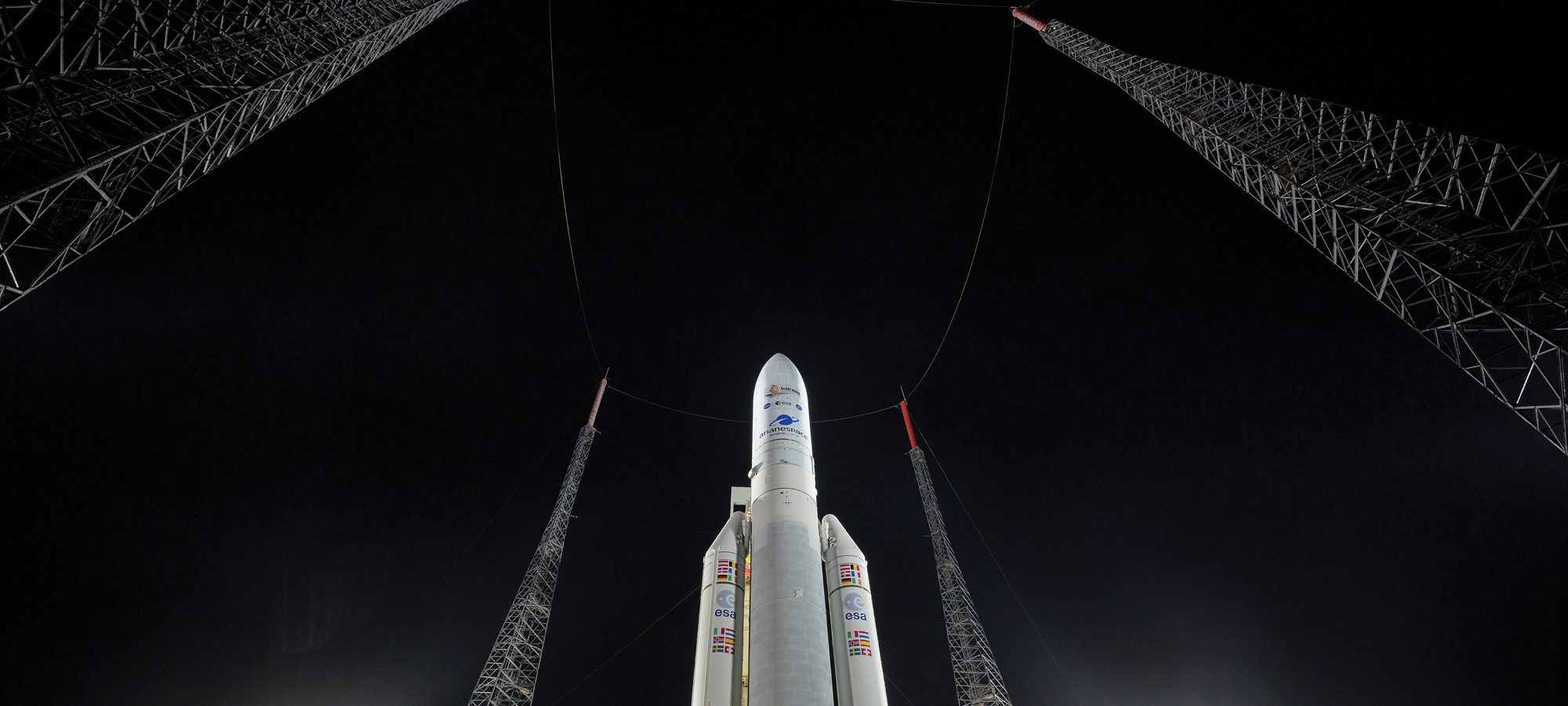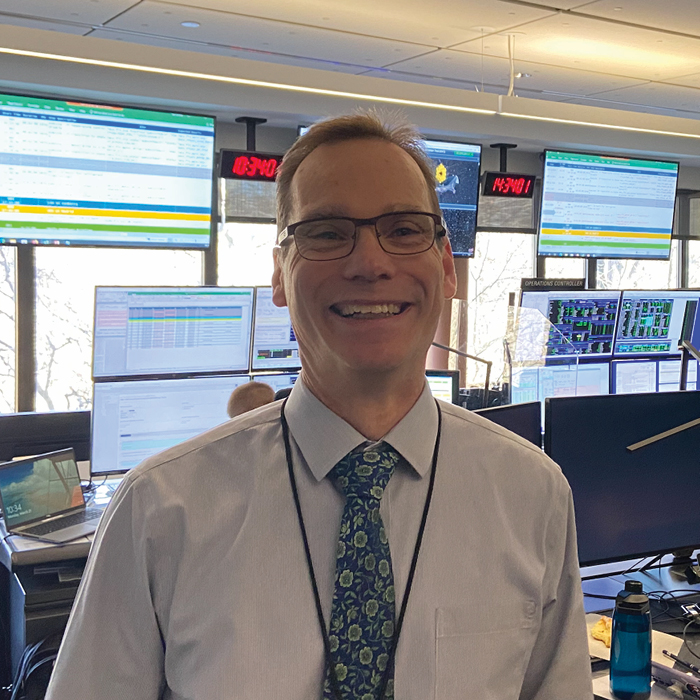
A stellar Christmas present: The James Webb Space Telescope began its million-mile journey on December 25, 2021. (NASA/Bill Ingalls)
Kenneth Sembach, AB’88, leads the mission to find the universe’s first light.
On the morning of December 25, 2021, the James Webb Space Telescope launched from French Guiana—a development decades in the making. The observatory includes 18 hexagonal mirror segments, a sunshield, and four instruments and was folded like origami for liftoff. For a month, Webb unfolded en route to its destination: the second Lagrange Point (L2), a spot where gravity from the sun and Earth work together to keep satellites nearly fixed relative to Earth, as they orbit the sun in sync.
Along Webb’s million-mile journey to L2, there were more than 300 stages where a malfunction could have ended the mission—three times more than for a Mars landing. But Kenneth Sembach, AB’88, wasn’t worried. As director of the Space Telescope Science Institute, the NASA-contracted nonprofit organization responsible for Webb’s flight and science operations, Sembach was reassured by the successful launch.
There were some “nerve-racking hours,” he says, like waiting for the sunshield to deploy—a complex process never before attempted in space. But when Sembach spoke with the Magazine shortly after Webb reached L2, he thought that the observatory had passed the most worrisome milestones. There could be problems with a subsystem or instrument later, “but we know the observatory is cooling down. The sunshield is doing its job. The telescope is deployed,” he says. “Everything looks good so far.”
Webb, an infrared observatory, will be used to study objects in our own solar system, the universe’s expansion, and exoplanets. Sembach is particularly eager to see what Webb was principally designed to find: the first light in the universe. When light travels for billions of years, it stretches out as the universe expands, from ultraviolet and visible light into infrared radiation. To see light from 13.5 billion years ago, when the first stars and galaxies switched on, says Sembach—“How do you top that?”
Sembach’s background is in spectroscopy—the study of how matter absorbs or emits light and other types of electromagnetic radiation—and he began that work at the University of Chicago. Alongside research professor Priscilla Frisch and Donald York, PhD’71, the Horace B. Horton Professor Emeritus in Astronomy and Astrophysics, Sembach studied the structure of the interstellar matter in the direction of the constellation Orion. (His interest in stars was sparked in the fifth grade by a Golden Books Nature Guide to constellations, hastily chosen for a book report. He used it to hunt for stars in the Chicago suburbs, and “Boom, I was hooked.”)

“I like the idea that light contains information,” says Sembach. During his College years and as a PhD student at the University of Wisconsin–Madison, he used data from ground- and space-based observatories, including the Hubble Space Telescope and the International Ultraviolet Explorer. “The fact that you can derive chemical composition and velocity and amount of material and distribution of different elements—just from looking at spectra—is pretty fascinating.”
Sembach still conducts research, but his leadership responsibilities at the Baltimore-based Space Telescope Science Institute (STScI), where he was named director in 2015, demand much of his time. Before that, he had already spent 14 years working on and eventually leading Hubble’s science program, which the STScI manages in addition to Webb operations.
When Sembach became director, he grew more involved with the Webb mission. The instruments had been built, but all major ground testing and flight operations development lay ahead. The science program—which determines how and why the observatory will be used and by whom—was defined in the past few years, with Sembach as the selection official.
The institute runs an annual competition for time on the telescope. For the initial round, STScI received about 1,200 proposals, but only a couple of hundred were approved after peer review. “You can do whatever you want with the observatory,” says Sembach, “but you’ve got to convince somebody it’s a good idea.”
Before Webb takes its first official glimpses into the universe, the primary mirror segments must be aligned, the instruments activated, and everything calibrated. (Sembach is also responsible for declaring Webb ready for prime time.) The early release observations are slated for July. He knows what those first science images will be, but he can’t say. We’ll have to wait like everyone else. He does not yet know what color palette scientists will use to render invisible-to-humans infrared light into something we can see. But “you know a Hubble image when you see it,” he says, “and I think the same will be true for Webb.”
The James Webb Space Telescope is often called Hubble’s successor, but Sembach expects at least five more years from Hubble. Webb should be operational for at least a decade, with enough fuel on board to keep the observatory in orbit for 20 years. “Having both Hubble and Webb working together,” says Sembach, “is going to be spectacular.” And in a few years, the Roman Space Telescope—named for “mother of Hubble” Nancy Grace Roman, PhD’49—will join Webb at L2.
Roman, an infrared observatory that repurposes a 2.4-meter mirror from a spy satellite, is the binocular complement to Webb’s telescope. Webb looks deep into space, with a narrow field of view. Roman won’t see as far but will cover an enormous region of sky. Imagine a Hubble image, only a hundred times bigger—which is, Sembach says in his understated way, “kind of cool.”
